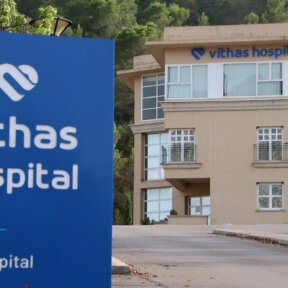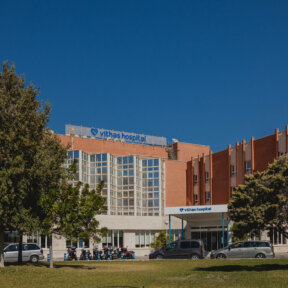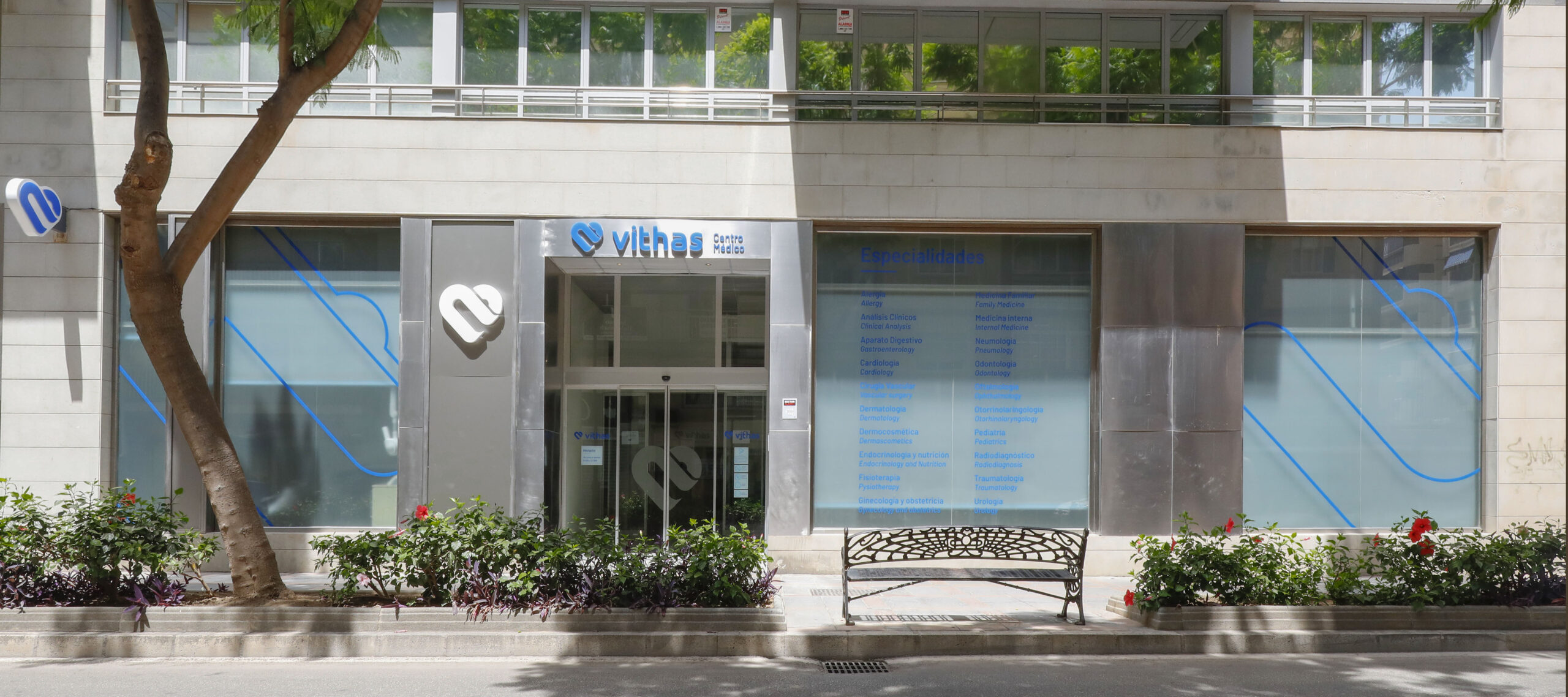What is sports medicine?
The Sports Medicine Department offers medical advice and counselling to people who do regular physical activity.
The unit is aimed at both elite athletes and people living a sedentary lifestyle who want to start a new exercise routine or sport.
In short, this speciality provides the care, advice, diagnosis and treatment needed to practise sports safely.
Which patients is it for?
This unit is intended for anyone who does sport regularly or is interested in starting a new sport or physical exercise routine, and needs a specific check-up.
Medical-sports examinations assess the athlete’s fitness to be able to perform physical activity. In examinations involving ergometry, objective data is added that tells us your fitness level and provides performance data so that we can design specific training programmes for each athlete.
Using this data, we prescribe physical exercise adapted to the sports level, specific physical activity (athletics, paddle tennis, tennis, swimming, football, basketball, rugby, etc.) and the availability of resources and facilities to perform their activity. It’s sport à la carte. Each athlete can enjoy specific training adapted to their characteristics.
Medical-sports examinations are also used to obtain the federal licences needed to practise federated sports for both adults and children.
They may also be performed for people with previous experience who decide to start a sport. For these cases and for all patients who will be significantly increasing the level or frequency of physical activity they perform, getting a preventive check-up is important. At any age, a check-up should be carried out before starting a new sport to prevent injuries or physical problems.
If we do detect any problems, you will be given priority treatment at the Sports Medicine Unit, where medical staff will work to solve your issue as quickly as possible because athletes cannot wait.
Main conditions and diseases
This unit works with both elite and amateur athletes, so medical staff will adapt to the patient requiring our services.
Check-ups: This department is mainly focused on functional medical-sports assessments for all ages and all levels of physical exercise and sports practice. Both amateurs and professionals. It also offers nutritional advice and ergogenic aids.
Injuries: This service is essentially focused on sports injuries that affect the locomotor system, offering care including diagnosis and treatment of injuries, as well as preventive techniques to prevent reinjury. The department deals with all types of conditions related to the locomotor system, not only those caused by sports.
Posture and gait study: This is a sports biomechanics service in which we perform gait, running and posture studies to identify possible alterations that can be corrected and in this way prevent them.
Neuromuscular training: Exercise Sequence© (NES ©) is a new method of neuromuscular training that combines innovative techniques. In a first phase, NES © detects and corrects instabilities and muscle inhibitions caused by poor posture in daily life or by overexertion in sports activity. In a second phase, NES © individualises and customises exercise sequences that allow you to maintain stability and muscle control, while recovering function and correcting compensation. NES ® is highly effective for recovery, rehabilitation, readaptation, retraining and optimising sports performance.
Main treatments
Sports medicine treats a broad spectrum of conditions ranging from simple injuries to very complex disorders. The most common injuries treated are sprains, strains and muscle cramps, as well as injuries to bones or ligaments.
Treatments depend on the condition to be treated, the patient’s symptomatology and the impact on sports activity. Physical therapy is one of the most common treatments for both recovery and prevention, and is prescribed with the aim of promoting active recovery from injury.
Supervised by a specialist in sports medicine, it will be possible to carry out a treatment that involves a guided physical exercise routine that works on and improves technique to avoid both possible injuries and reoccurences of previously treated conditions. Different machines may be used to help patients with this practice.
For more severe injuries, invasive treatments may be used. These treatments may include steroid and hyaluronic acid infiltrations, which are used to reduce inflammation and relieve patient pain.
Areas of specialisation
There are various specialities within sports medicine depending on the objectives they focus on, as well as the type of approach to treatment.
- Anatomy and exercise biomechanics, focused on using correct technique and modifying movements that may increase the risk of developing an injury.
- Pharmacology
- Sports nutrition
- Sports psychology
Sports pharmacology, nutrition and psychology focus on issues related to improving the patient’s performance, physical ability and emotions when playing sport.
Special services
Vithas offers you high-quality medical care, performing the necessary studies to establish an adequate diagnosis, treatment and follow-up for each patient's condition, regardless of their fitness or sports level.
FAQs:
What is a pre-sports physical exam?
This exam is done before taking part in any sport and helps determine whether or not it is safe to participate in a given sport. Sports federations require children, adolescents and even adults to take a medical examination to be able to play a federation sport, before starting the competitive season. This pre-sport physical examination is indicated even if you will not be playing a federation sport but simply when you start a new sport, whatever it may be.
Why is the pre-sport physical important?
Pre-sport physical examination can help you detect and address health issues that could interfere with your taking part in a sport. For example, if you have asthma and you play basketball, the doctor may prescribe a more appropriate type of inhaler or adjust your dose after the sports physical so that you can breathe more easily when you run.
The specialist who performs the pre-sport physical exam can give you tips to improve training that will help avoid injuries, such as certain stretches or muscle-strengthening exercises to help you prevent injuries.
The sports doctor also identifies the risk factors linked to a particular sport to help you improve your sports practice, in different aspects such as endurance, strength or speed.
When and where should I go for a pre-sport physical?
Usually an annual pre-sport physical is enough, although if you have just recovered from a serious injury, you will need an exam once you have been discharged before you can play sports again or think about starting a new one.
Ideally, this type of exam should be done around 6 weeks before the sports season starts so that you have enough time to follow up, if necessary.
Should I get a regular physical anyway even if I’m not going to play federate?
Although it may seem excessive, it is the best option to ensure your well-being when you play sport.
On the other hand, it is important to keep in mind that even if the exam doesn’t reveal any problems, it is always advisable that if you notice changes in your physical condition (even if they seem insignificant, such as muscle pain or shortness of breath), you should consult your specialist, as well as if for any reason you need to take a new medication or similar. It is important to have specific health care in order to continue improving your sports performance.
What is a cruciate ligament injury?
Cruciate ligament injury is the most well-known and common injury among football players, regardless of whether they’re professional or not. A few years ago it was a complicated injury to treat, although fortunately today the ligament can be reconstructed from a bone bank. In addition, this intervention is performed arthroscopically, without tunnel placement in the tibia, which greatly accelerates the patient’s recovery and completely reduces pain. Recovery ranges from 6 to 12 months, and after the operation you will usually have crutches and a splint for a short time. Physical therapy is essential to achieve full recovery.
What is an ankle sprain?
An ankle sprain is a type of injury that can come in different degrees. It can be a minor injury that improves within a few days, or it can even require surgery to reconstruct the ligaments of the ankle, so the recovery time will depend on the degree of the injury.
There are Grade I sprains: a mild injury involving an over-stretch of the ligament with micro-ruptures. Grade II sprain: a moderate injury involving the partial rupture of the ligament. Finally, Grade III sprains: a serious injury involving the complete rupture of the ligament.
What is epicondylitis or tendonitis?
It is a very common injury involving inflammation of a tendon. It is nicknamed “tennis elbow” or “golfer’s elbow” depending on where the damage is located. Golfer's elbow occurs on the inside of the elbow, while tennis elbow occurs on the outside. In these cases, the treatment may involve the use of a splint, and you may even need to modify the sports activity that caused it.
Treatment without surgery is performed in a minimally invasive manner with ultrasound, in which the bad tissue is resected with aspiration or suction. Recovery is much faster than in traditional surgery, which is also very painful.
What is a sprain of the interphalangeal joints of the fingers?
The fingers are often injured in sports such as basketball, handball or volleyball, as well as in any activity where there is an impact with the ball or with another athlete, like in fronton or martial arts.
Treatments for finger injuries vary greatly, depending on whether it is a sprain, a tendon avulsion, whether it is palmar or dorsal, extensor or flexor, etc. There are therefore many different injuries that can occur on the fingers, so each case must be assessed by a specialist, and may even require the intervention of a hand surgeon or sports orthopaedist.
What is a labrum tear?
The labrum is the tissue of the shoulder surrounding the glenoid, which is the shoulder socket. The humerus is the head and the socket is inside. It is a very common injury in basketball players due to the impact it has on the arms, which causes the labrum to tear. Currently, this type of injury is resolved with an arthroscopic intervention, with two or three small incisions.
It’s an outpatient procedure that takes only 30 to 40 minutes. Once the intervention has been performed, you will need a lot of physiotherapy sessions.
















